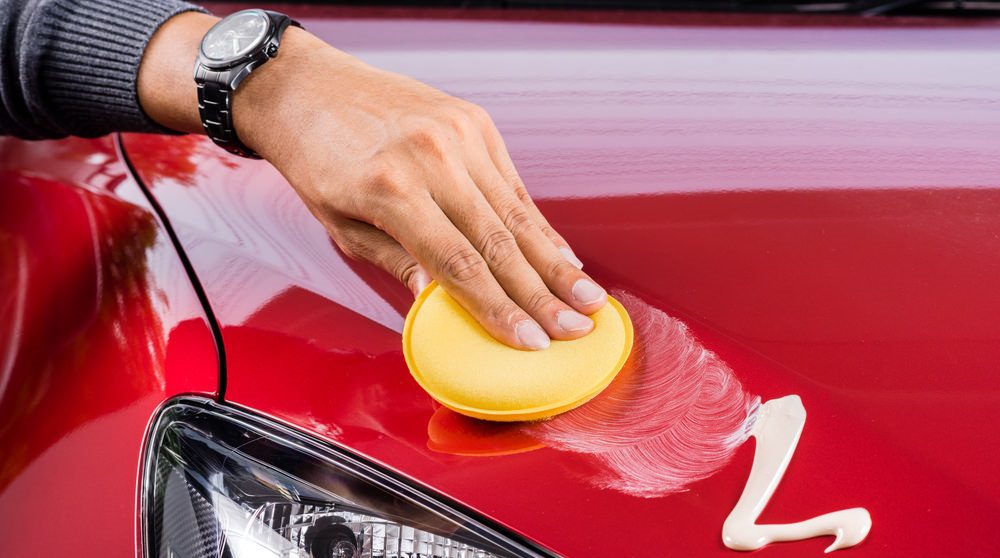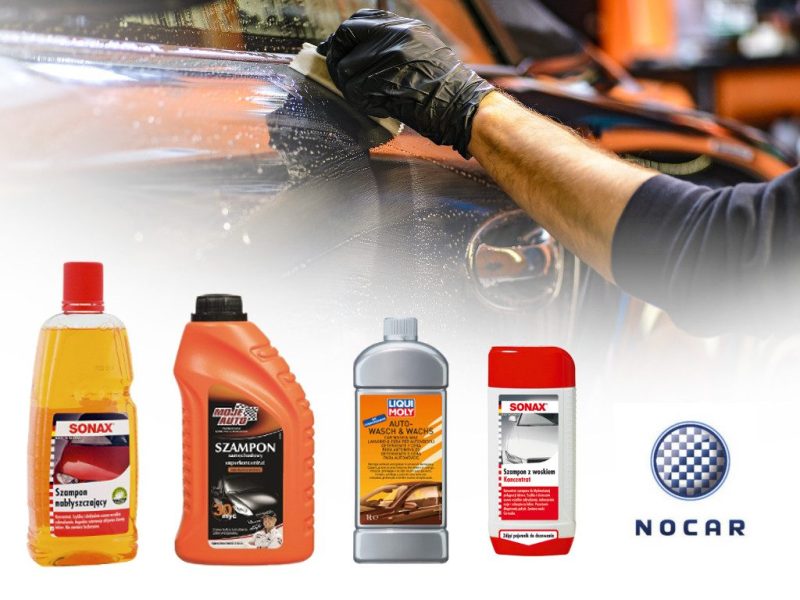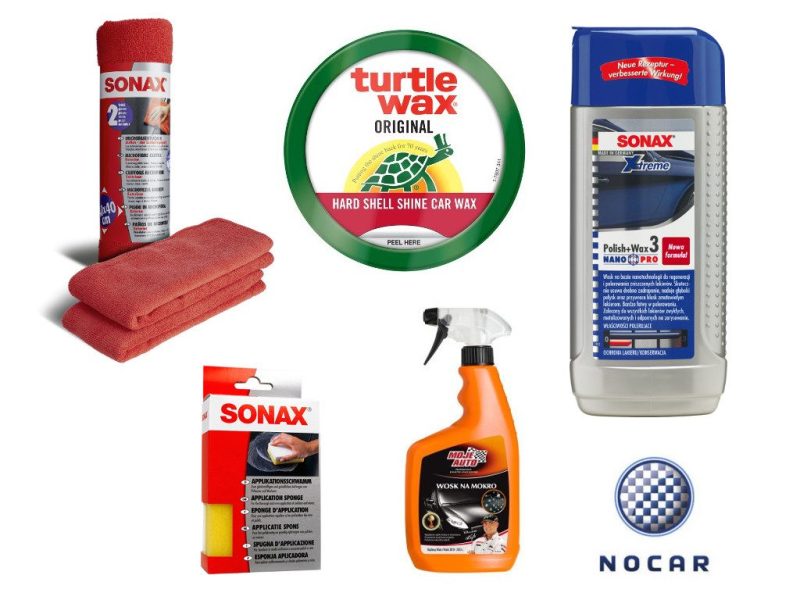
How to wax a car?
Content
Each varnish loses its luster over time. It tarnishes, tarnishes, cracks, or gets damaged. To make the car grow at the expense of a well-groomed body, take good care of its cosmetics and wax it 3-4 times a year. Which product to choose and how to apply the wax? We advise!
What will you learn from this post?
- How to prepare a car body for waxing?
- How to wax your car step by step?
- What are the effects of body waxing?
TL, д-
Before waxing, the vehicle must be wash thoroughly and dry with a soft microfiber towelwhich absorbs water well. Among the wax additives, we can choose pastes, milks and sprays - the features we choose depend on the amount of free time and our skills... Applying the wax in the form of a paste can be difficult and time consuming, but gives the best results. Milk and sprays are much easier to spread on the car body, although the results are not as impressive.
Waxing should not be carried out when the outside air temperature is above 20 degrees Celsius. After applying the wax, you need to wait a few minutes, and then distribute it in a circular motion over the varnish until it is completely absorbed. A sign of a properly performed epilation is the absence of streaks on the car body and a clear reflection of the sun's rays in it.
Preparation: washing and coating.
The key to successful waxing is a thorough car wash. Getting rid of a layer of dirt, dried leaves and organic residues shows the true state of the paintwork, revealing all scratches and microdamages. The “two bucket” method works well for washing the car body. Pour warm water with car shampoo diluted in the appropriate proportion (indicated by the manufacturer on the package) into one of them, and only water into the other. A dirt separator placed in a bucket of water is also useful - thanks to this, dirt particles sink to the bottom and do not come into contact with the glove when rinsing the glove.
We wash the car from top to bottom, from the roof to the lower parts, and finally leave the places, usually the dirtiest: bumpers, rims and lower parts of doors. Soak the glove in the first bucket, and then squeeze the foam onto the car body and remove dirt with longitudinal movements... Then rinse the glove in a bucket of clean water.
Another important step is to thoroughly dry the body. Best to use soft microfiber towel that absorbs water well. To get rid of excess water, we never use silicone or rubber scrapers - if even the smallest grain of sand gets under them, shaking off water, we will scratch a scratch on the paintwork.

Finally, we can also clay plasterwhich removes the smallest dirt deep in the paintwork and makes it perfectly smooth. Gently moisten the loosened part of the clay, and then wipe the cleaned part of the car body with it until visible dirt appears on it. Clay perfectly removes not only dust particles and road dust, but also the remnants of previously performed waxing, therefore, after this operation, it is necessary to protect the varnish with a new layer of wax.
Wax agents
In stores, you can find wax in three forms: pastes, lotions and sprays... Which to choose? It depends on what time we have and what effects we expect. To apply the wax we need a sponge applicator or microfiber cloth.
Which wax should you choose?
Paste waxes (hard) are one of the most popular - both by car enthusiasts and professional auto detailing studios. They create the most impressive effects, providing a mirror-like shine, richer color and long-lasting protection of the paintwork. However, its application requires practice - improper application can leave ugly streaks. Such waxes include, for example, K2 Proton based on natural carnauba wax.
Milk wax is easier to apply – its use is not a problem even for drivers who are waxing for the first time. Milk gives the varnishes an extraordinary shine. They are characterized by hydrophobic properties, due to which they repel water molecules: drops do not settle on the body with dirt, but flow freely.
Using a spray wax will give you clear results. It is enough to apply clean and dry varnish and then wipe with a soft microfiber cloth. It will add shine to the car body, revitalize colors and protect against dirt. Using aerosol wax, we don't need to worry about unsightly streaksbecause it spreads easily over the varnish thanks to its liquid formula.

Waxing
Waxing should not be carried out on a hot sunny day - the temperature should not exceed 20 degrees Celsius, because. on hot varnish the water dries instantly and the wax melts... The way wax is applied depends on its type, so first you should familiarize yourself with the manufacturer's recommendations on the packaging. Apply the required amount of the preparation on the sponge and then We carefully distribute it over a small fragment of the car body and leave it for a few minutes.... The wax is ready to be polished when there are no marks left on it by touching it with a fingertip or when the characteristic fog appears. Then, using a soft microfiber cloth, rub the drug in a circular motion until completely absorbed and the formation of a slippery and shiny layer on the varnish. You can observe the progress of work by looking at the car against the light - if the sun's rays are clearly reflected and there are no stripes on the body, then the waxing was carried out correctly.
To test if the resulting coating will provide adequate paint protection, simply spray it with water. If the droplets become round in shape, they will not fall on the car body along with the dirt.
privileges
Waxing is a process that takes time and care. However, it brings visible results - the waxed and polished body takes on a radiance and deep color, and dirt settles on it more slowly... To wash them off, simply rinse the machine with a high pressure water jet. Thus, keeping the body clean is easier and less time consuming..
However, the use of wax does not only bring aesthetic benefits. It also prevents rust formation. Thanks to waxing, a layer is created on the car body that protects it from aggressive factors - deposits of water, dirt and organic residues (for example, pieces of leaves or bird droppings).
Car waxing should be repeated every few months, but always before the autumn-winter season - in this case, the car body is especially exposed to significant temperature fluctuations, frequent rains and snowfalls, as well as the harmful effects of road salt. While waxing can take a long time, the results are rewarding. A shiny appearance attracts the attention of passers-by and other motorists and adds value to the vehicle.
Are you waxing and need a proven product? Be sure to check out avtotachki.com!
If you're looking for other car care tips, check out the other posts on our blog:
How to manually polish a car?
How to take care of your car before winter?
Take care of the windows in the car!